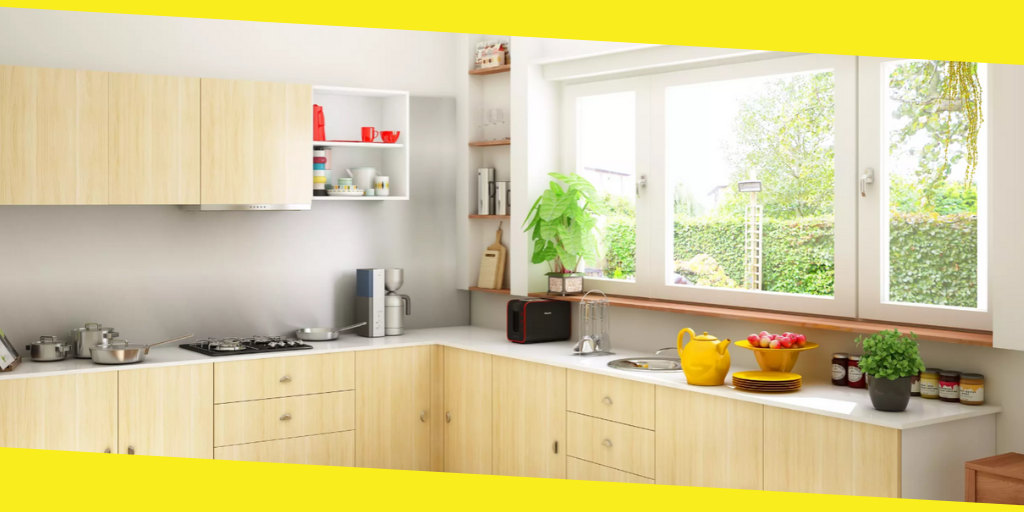Going Green in the Kitchen

Being environmentally conscious is not limited to joining tree-planting programs and ditching the use of plastics. Sometimes, we often forget that our daily habits have a big impact on the environment as well. And one of these so-called habits is the preparation and disposal of everything food-related in the kitchen.
Did you know that 20% of your household’s energy consumption accounts just for cooking alone? And this number doesn’t even include your other appliances in the kitchen, such as the fridge and dishwasher too.
That is why it is safe to conclude that if you want to help the environment in your own simple way, start in the kitchen. Let’s be honest; going green is not going to be an easy lifestyle change. However, if you start being more conscious in your household choices, you’ll be surprised at the impact you’re making for the environment.
How to Make Your Kitchen More Eco-Friendly?
Maximize Your Cooking Time
As much as possible, be mindful of your energy consumption during cooking. We know some tasks and recipes call for a long cooking period, but there are ways that you can bypass them. For example, as mentioned by this source, a hot water dispenser is more energy-efficient because you can use it to jumpstart boiling some ingredients. Since you’re already using hot water, you get to cut time in waiting for the water to reach your desired temperature.
And if you have ready-made hot water available, you minimize the need for constantly reheating water for each use. Think about it; let’s say you need to boil water for tea in the morning. And afterward, you’re going to boil water again if you need to wash some greasy plates in the afternoon.
Hot water dispensers actually require less energy because all they do is keep their tank hot. This is in contrast to kettles that start from low temperature then bringing it higher, which will need more energy.
Another way of saving energy is by simply choosing a good quality oven. Some models will actually don’t need preheating because they’ll reach your desired temperature quickly anyway. And if you have more than one rack, why not cook some recipes simultaneously?
Once you’re done cooking, you can also take advantage of the residual heat to cook other ingredients. In fact, sometimes, the residual heat is enough to finish the cooking for you. This way, you get to turn the oven off much earlier.
Since we’re talking about cooking time, another factor that affects its duration is the size of your cookware. For example, think if the cookware you’re using is proportionate to the quantity of your ingredients.
Let’s say you’re using a large pan on a small-sized burner, do you think it will get hot quickly? Of course, a larger and more powerful burner will give you shorter heat-up time for a larger pan as well.
And lastly, another pro-tip is using a quality tight-fitting lid to make sure the heat doesn’t escape your cookware.
Always Choose Quality Appliances
The main point of the previous tip is that the shorter time it takes for you to heat your cookware, the more energy you’ll be conserving. So another question will also pop to your mind, “What kind of source should I use?”
If you choose to use a gas stovetop, you’ll have better control of the temperature. Not to mention, getting it to produce heat is instantaneous, and turning it off is as quick as well. Therefore, you’re not really wasting heat using it.
With an electric stove, on the other hand, you’re using an induction element that transfers electromagnetic energy in the cookware. It also happens to be healthier and greener since it doesn’t add that much nitrogen dioxide and carbon monoxide in the air. But this is at the expense of being limited to using metal cookware.
Stovetops that use halogen elements are also great in an energy efficiency standpoint. As long as there’s good contact between the surface and the pan, controlling its temperature is going to be quick and easy. However, this source is meticulous when it comes to the compatibility of the surface to the cookware.
So which stovetop should you choose? It depends on which of these three you think will last you. Pick the one that matches your lifestyle, so you don’t end up disposing it halfway. If you choose the more compatible unit for your household, you’re going to be saving on resources and materials that are used in their production.
This mindset is also applicable to other appliances and items in your kitchen. The more durable they are, the longer you’ll have before you need to replace them and throw them out. This might seem like a very simple help for the environment, but you’ll be appreciating its effects in the long run.
Think of it this way; improper disposals of kitchen paraphernalia often lead to chemical leaching. At the same time, you’re adding more waste in the landfill, which will surely take a lot of years before they’ll be gone. Ask yourself if you really need an uber-complicated kitchen appliance that might not even last you for a month. With proper decision, you can find an appliance that won’t cost you your retirement fund and won’t give the earth a beating.
Minimize Waste
There are many ways on how you can cut waste in the kitchen. Among the other sections in the house, it is safe to say that the kitchen produces the most waste. You can start by using a trash compactor to save on space in your disposal.
But a more doable approach is by simply bringing your own bags when grocery shopping. You can also reuse containers and jars for storage and start a compost for the papers and cardboards. The main point is recycle as much as you can!
You should also be mindful of how much leftovers you’re throwing away. Yes, in a way, you’re saving energy and effort when you cook in bulk. But always consider how realistic this amount is for you to consume during its given shelf life.
DIY and Buy Local
Before you can have an ingredient, it will have to come through multiple steps. This includes processing and even transportation. If you opt to support your local farmers, you get to cut on the costs and energy needed in these steps.
Doing certain kitchen items yourself is also another way to skip these steps. It might be as simple as growing your own herbs or using white vinegar and baking soda as your cleaner. And the fact that you know to yourself that you’re not using anything potentially harmful is just an added bonus.
Recommended For You
The Best Way to Establish a New Network When Moving Town
Most Inside
Most Inside offers high-quality recommendations and valuable updates to enhance all aspects of your life, providing premium guidance and enriching experiences.




